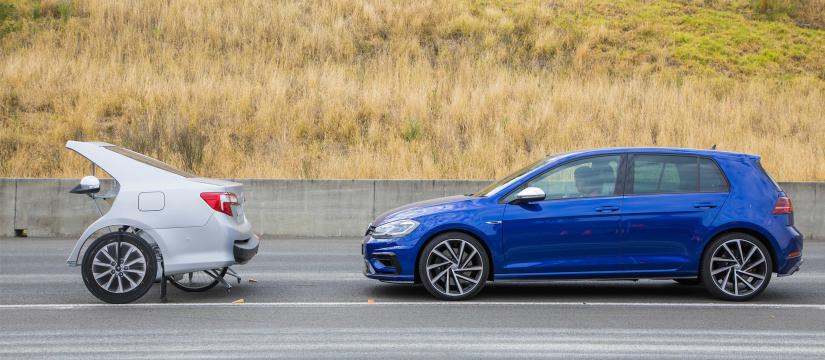
Have you heard about ADAS?
With every new model our cars are getting smarter – and safer, too. If it feels impossible to keep up with the ever-evolving improvements in vehicle safety technology, we’re here to help to bring you (safely) up to speed.
The NRMA Insurance Research Centre has been testing and researching ADAS technologies since they first arrived on the Australian market. Here’s the rundown on the latest systems on offer, what they do and how they work to help keep you and your family safe on the road.
What is ADAS?
Advanced Driver Assistance Systems (ADAS) is an umbrella term for several safety systems with some considered “Collision Warning and Avoidance Systems” with more constantly being developed. These include:
- Autonomous Emergency Braking (AEB)
- Adaptive Cruise Control (ACC)
- Lane Keep Assist (LKA)
- Intersection Collision Warning
- Blind Spot Monitoring
- Surround view camera/360 surround camera
- Other systems to aid parking, reverse parking etc
ADAS uses technologies such as radar, cameras or laser (or a combination of these, known as sensor fusion) to identify other vehicles and dangers in your vicinity. Some ADAS systems can also identify pedestrians and surroundings.
These systems are designed to monitor the road ahead and the vehicle being driven at all times, helping the driver stay safe by alerting them to potential hazards before they become unavoidable and, in some cases, taking action if the driver does not respond in time.
One such system is Autonomous Emergency Braking (AEB). AEB testing is part of the suite of assessments performed on new vehicles at the NRMA Insurance Research Centre, known collectively as New Vehicle Evaluations. New assessments on ADAS are currently being developed by the NRMA Insurance Research Centre to be used to better understand what each vehicle is capable of and how effective each system is.
What do ADAS technologies do?
- Autonomous Emergency Braking (AEB) – AEB monitors the road ahead and warns the driver of potential dangers. It can apply braking force to help reduce the severity of a collision or can potentially stop the vehicle completely (dependent on the conditions at the time).
- Adaptive Cruise Control (ACC) – ACC keeps the vehicle’s speed remain constant and a safe distance from the vehicle in front. It can both accelerate and brake the vehicle as required.
- Lane Departure Warning (LDW) – A camera scans the road for lane markings and warns the driver if they are leaving the lane. LDW works best on straight roads.
- Lane Keep Assist (LKA) - A camera scans the road for lane markings and attempts to keep the vehicle within the lane. LKA works best on straight roads and can be overridden by the driver at any time.
- Intersection Collision Warning – Radar or camera technology scans an approaching intersection for vehicles approaching from the side and warns the driver if possible.
- Blind Spot Monitoring – Radar monitors the driver’s ‘blind spots’ and warns if a vehicle is there.
- Surround view camera/360 surround camera – Uses several cameras to make an ‘all-round’ view of the vehicle that can be seen on the vehicle’s dashboard. This is used to identify potential obstacles or pedestrians when parking, reverse parking etc.
Why are ADAS technologies important?
ADAS technologies are known as primary safety systems, meaning they can help avoid or prevent a collision. In comparison, an airbag is considered a secondary safety system, which can help to reduce or prevent injury as a result of a collision.
Why is it important to do ADAS testing?
The team at the NRMA Insurance Research Centre perform ADAS testing in order to be at the forefront of car safety technology and to better understand how these new systems work and what risks they present. They are also done to help provide feedback to manufacturers.
Why consider getting a car with ADAS?
ADAS technologies are proven safety systems, so any customer driving a vehicle with a quality ADAS system may have a reduced risk on the road.
All new vehicles feature some sort of ADAS, with AEB more frequently fitted as standard. When looking for a new car, customers should enquire what ADAS/Collision Warning and Avoidance systems are fitted as standard to the vehicle.
Having a vehicle with a selection of ADAS technologies may potentially prevent a collision, minimise a collision’s impact or save money in repairs, but most importantly, it can help keep everyone safer on the road.


